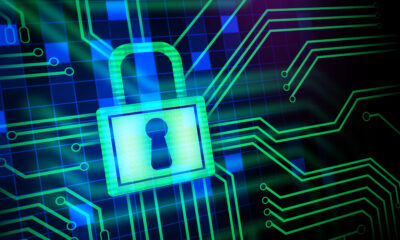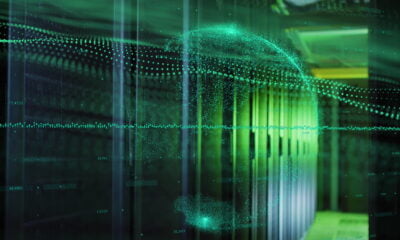

Features
Microbioreactors Can Make Biotechnology Research Eco-Friendly
Technological research is growing at a rapid pace. However, we often don’t spend enough time thinking about the environmental impact of these new technological breakthroughs. They need to embrace sustainability to make their industry more valuable.
There is a growing need to develop eco-friendly research and development processes. New research indicates that bioreactors can be eco-friendly, which means they may play a key role in making biotechnology research more sustainable.
The Role of Bioreactors in Making Biotechnology Research Eco-Friendlier
In 2016, team of researchers from University of Cyprus and the University of Edinburgh researched the environmental impact of bioreactors. Their research was encouraging.
The authors found that MBR technology was a sustainable solution for urban wastewater treatment. The construction phase has minimal environmental impact compared to the operational phase. Alternative scenarios and potential improvements were examined to minimize the overall environmental footprint of the MBR system. The energy mix significantly affects the sustainability of the MBR pilot unit. An environmentally friendly energy mix can reduce greenhouse gas emissions by up to 95%. The construction and operational phase contribute to the overall environmental footprint of the system.
This means that bioreactors can be important for biotechnology researchers trying to lower their carbon footprint. The demand for efficient, affordable and eco-friendly research and development technology processes grows rapidly, and with that in mind, it’s clear to understand why the global bioreactor market is projected to hit an impressive $30.42 billion in the next 11 years. This data underscores the industry’s increasing importance and potential for growth.
To that end, microbioreactors are proving to be a game-changing tool for researchers, especially those that want to engage in eco-friendlier practices. These reactors provide a controlled environment and are an ideal platform for conducting small-scale bioprocessing experiments.
As a science enthusiast, staying updated on the latest advancements in research techniques is essential, and microbioreactors hold immense potential for modern biotechnology experiments. Looking to learn about how these advanced devices can change the game in biotechnology research? Let’s dive in together and explore the world of revolutionary biotech research tools.
What Are Microbioreactors?
Microbioreactors are special bioreactors designed to culture and analyze the growth of microorganisms, mammalian cells, and plant cells. They offer valuable insights into the crucial parameters that impact organism growth and compound production by enabling scientists to monitor, control, and analyze factors such as oxygen levels and pH levels. This capability has made microbioreactors an indispensable tool in various research fields, including bioprocessing, synthetic biology, and environmental studies.
On the other hand, ever since their inception, large-scale traditional bioreactors have been instrumental in the biotech industry in creating value-added products and for experimental purposes in universities and research centers. In addition to that, these reactors can hold several thousand liters based on their design and usage.
However, for lab-scale studies, microbioreactors offer considerable benefits over their traditional counterparts. Microbioreactors are significantly smaller, typically a few milliliters, enabling high-throughput studies in a laboratory setting. This feature can transform the biotechnology field by facilitating cost-effective, efficient, and rapid studies.
Benefits of Using Microbioreactors
Microbioreactors offer several advantages over their more massive, traditional counterparts, some of which include the following:
- Sustainability. As the research cited above indicates, bioreactors are better for the planet than many alternatives. Therefore, scientists trying to be eco-friendlier should consider using them. They should also look into other technologies that are making industries greener.
- High-throughput screening. Microbioreactors enable researchers to conduct multiple experiments simultaneously, increasing experimental throughput tremendously.
- Low cost. The smaller scale and reduced material requirements of microbioreactors lead to a fraction of the operational costs compared to large-scale bioreactors.
- Flexibility. They can easily be optimized to accommodate various studies, whether it’s a small-scale screening effort or a more complex experimental process.
- Reproducibility. They allow for better control of key parameters, ensuring that experiments can be replicated with high fidelity.
Tips for Designing Your Microbioreactor Experiment
To achieve the best possible results in your microbioreactor experiment, it’s important to carefully consider the design. While each study may have unique requirements, there are several key factors to contemplate before beginning the experiment:
- The type of cells or microorganisms being cultured.
- The growth conditions, such as temperature, pH, and agitation.
- The composition of culture media and nutrient requirements.
- The monitoring and control systems required for the experiment, such as sensors or feedback mechanisms.
- The scale-up potential and industrial application of the desired product.
Considering these factors will help ensure your microbioreactor experiment succeeds and produces the desired results.
Applications of Microbioreactors in Biotech Research
Among their many applications, microbioreactors are used in drug discovery, cell and tissue culture, synthetic biology, and environmental microbiology.
In drug discovery and development, microbioreactors can efficiently screen potential drug candidates and optimize the best conditions. In cell and tissue cultures, microbioreactors create controlled growing conditions for various cells or tissue samples, providing potential therapeutic applications or further research.
Additionally, microbioreactors provide synthetic biology researchers with a robust platform to manipulate cells to yield specific compounds. This advantage allows for the simultaneous screening of multiple cells and the optimization of the process to enhance targeted compound production yield.
Furthermore, microbioreactors have diverse applications beyond bioprocessing, offering environmental microbiologists a tool to study microorganisms’ responses to different environmental factors like pollution, pH, and temperature.
The diversity of simulated environmental conditions in these reactors undoubtedly aids comprehension of microbial behavior and its impact on the ecosystem.
Bioreactors Can Play a Huge Role in Making the Biotechnology Sector More Sustainable
Biotechnology researchers that are striving to be eco-friendlier should look into the benefits of using bioreactors. These high-tech microbioreactors provide a controlled, cost-effective, eco-friendly and efficient platform to conduct small-scale experiments. Compared to traditional bioreactors, microbioreactors offer several benefits that make them a preferred choice among researchers. Think high-throughput screening, flexibility, low set-up expenses, and a high degree of reproducibility. Moreover, microbioreactors find widespread applications in cell and tissue culture, drug discovery, synthetic biology, and environmental microbiology, which means they are here to stay and will be key to unlocking breakthroughs in biotech research.


 Environment10 months ago
Environment10 months agoAre Polymer Banknotes: an Eco-Friendly Trend or a Groundswell?

 Environment11 months ago
Environment11 months agoEco-Friendly Home Improvements: Top 7 Upgrades for 2025

 Features9 months ago
Features9 months agoEco-Friendly Cryptocurrencies: Sustainable Investment Choices

 Features10 months ago
Features10 months agoEco-Friendly Crypto Traders Must Find the Right Exchange





























